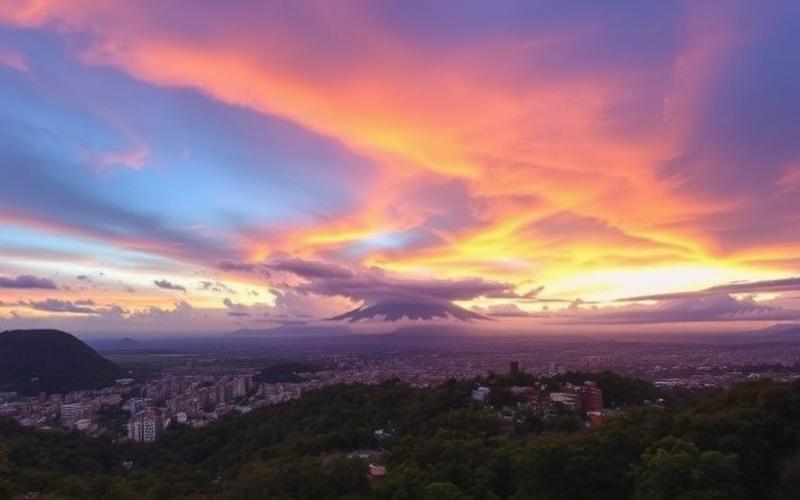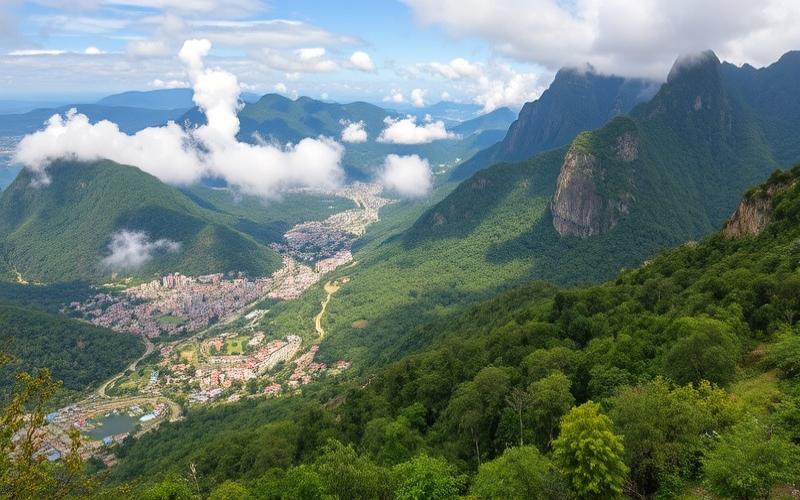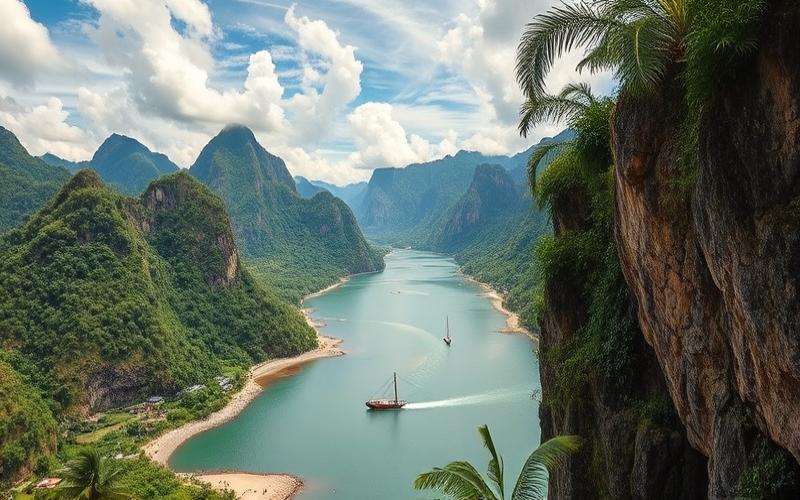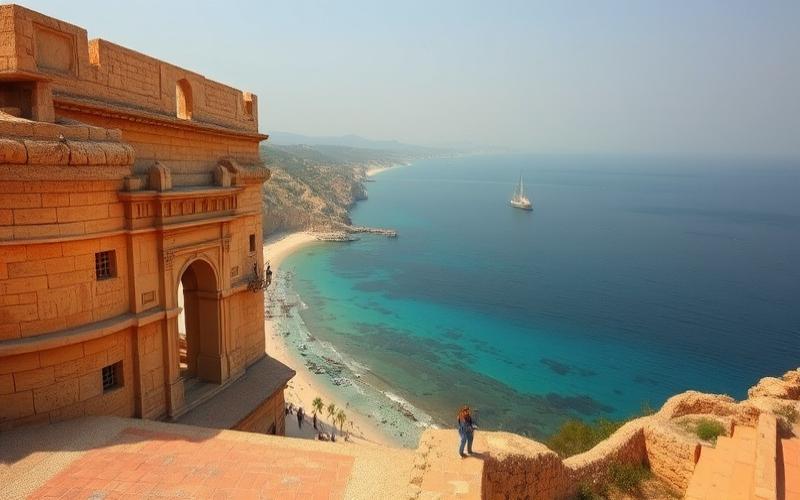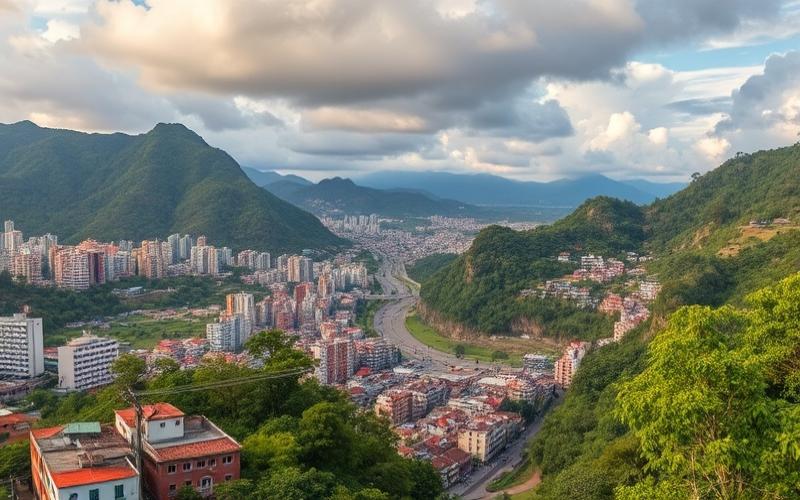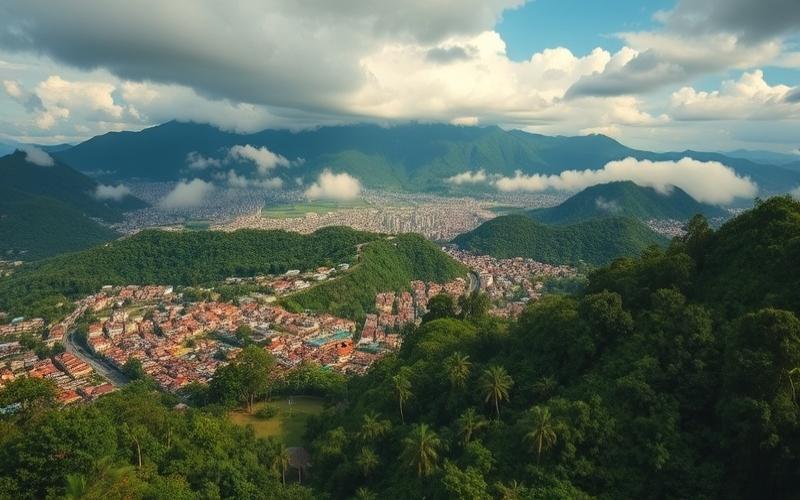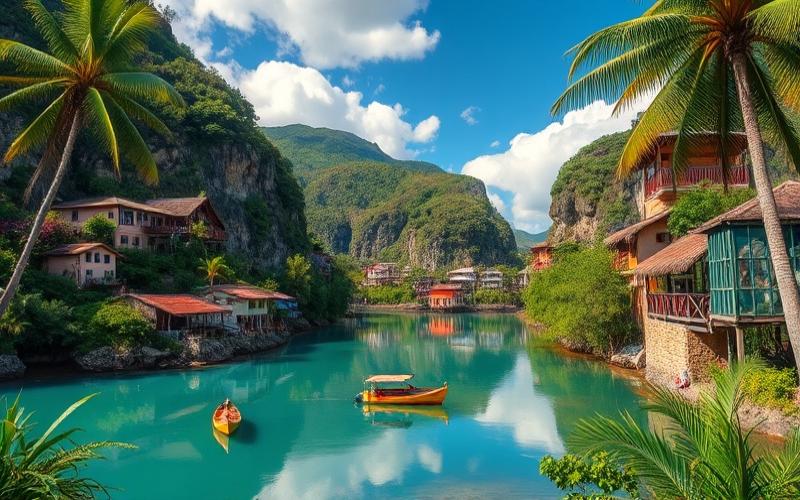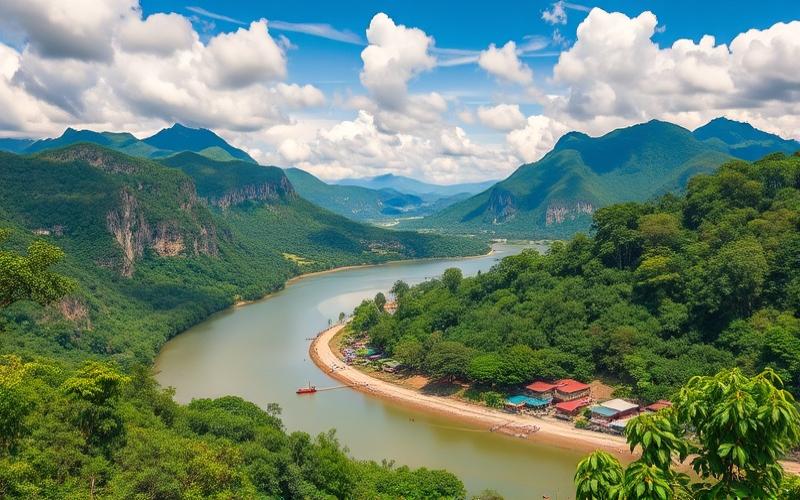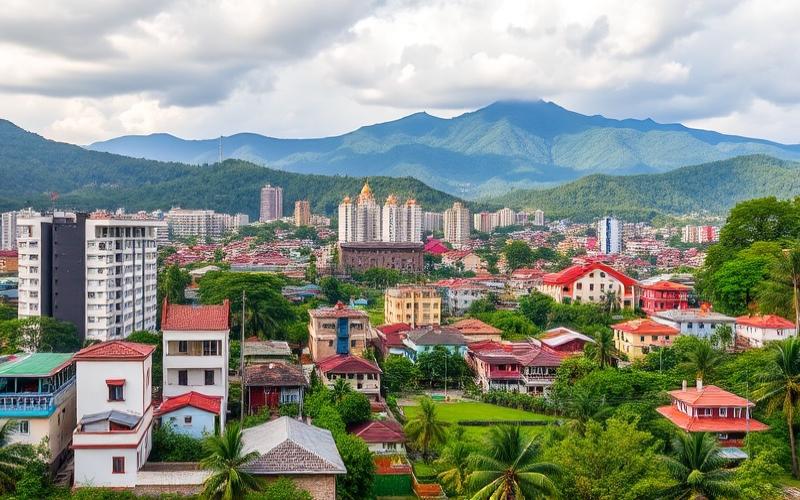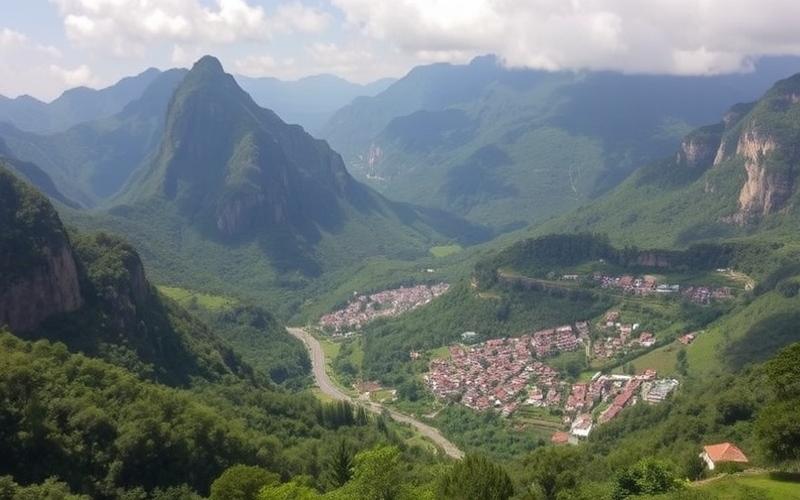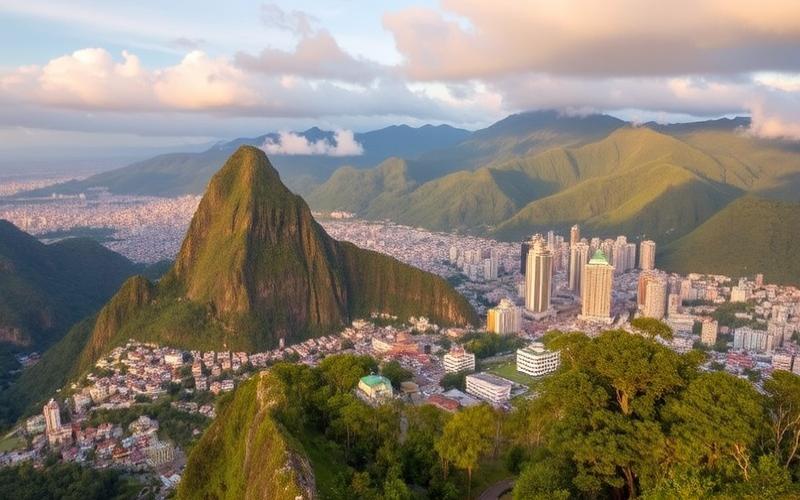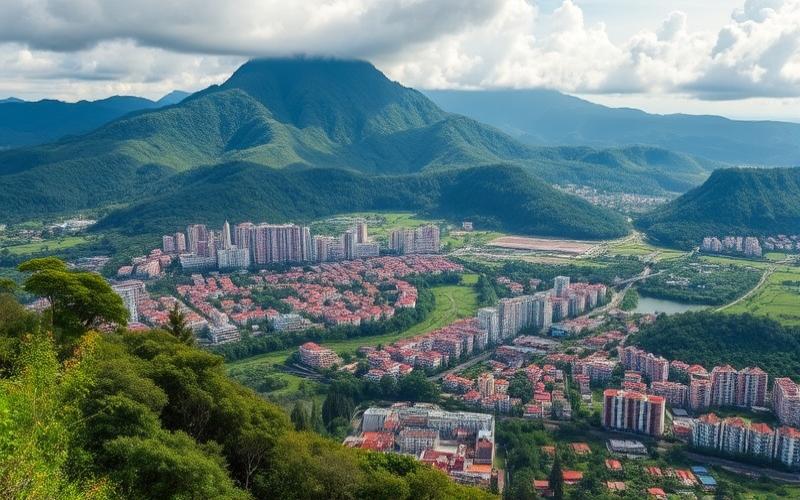
 Published on and written by Cyril Jarnias
Published on and written by Cyril Jarnias
Relocating to Colombia as an expatriate may seem like a bold and rewarding adventure, but it also comes with unique challenges that require careful preparation.
This practical guide will walk you through every essential step of your move, from choosing the ideal city to integrating into a new culture, including all the necessary administrative procedures.
By exploring the flourishing professional opportunities and rich cultural contrasts that define this vibrant country, this article will provide all the tips and advice needed not only to successfully settle in but also to fully thrive.
Preparing Your Relocation to Colombia
Administrative Procedures for Expatriating to Colombia
- Required Visa: For stays under 90 days, French nationals don’t need a visa but must present an outbound ticket. For expatriation (over 90 days), several visa types exist:
- Migrant Visa (M): For work, studies, family reunification, investment, etc.
- Resident Visa (R): For permanent settlement, accessible after several years under an M visa or through lineage with a Colombian child.
- Visa applications are submitted online with proof of resources, activity, and documents translated into Spanish by a certified translator.
- Cédula de Extranjería: Mandatory ID card for any stay over 90 days with a visa, to be applied for within 15 days of arrival. Required steps:
- Complete the online FUT form.
- Schedule an appointment at a Migration Services Facilitator Center.
- Present passport, visa, supporting documents, and pay approximately 280,000 COP (about €60).
- Card pickup within 10 business days.
- Other Procedures:
- Consular registration with the French consulate for stays over 6 months.
- Bank account opening possible after obtaining the cédula.
Housing Search
Neighborhoods Popular Among Expatriates:
- In Bogotá: Chapinero, Usaquén, La Candelaria.
- In Medellín: El Poblado, Laureles, Envigado.
- In Cali: San Antonio, Granada.
- In Cartagena: Bocagrande, Manga, Getsemaní.
Average Real Estate Market Prices (2024, for monthly furnished apartment rental):
| City | 1 Bedroom Downtown | 3 Bedrooms Downtown | 1 Bedroom Suburbs | 3 Bedrooms Suburbs |
|---|---|---|---|---|
| Bogotá | €350-600 | €700-1200 | €250-400 | €450-700 |
| Medellín | €400-700 | €800-1300 | €250-450 | €500-800 |
| Cali | €300-500 | €600-900 | €200-350 | €400-650 |
Lease signing is typically for one year, with a local guarantor often required.
Healthcare and Insurance
Healthcare System: Mixed, with a public system (EPS) and many quality private clinics in major cities. Enrollment in an EPS is mandatory for residents, but coverage and speed vary significantly by facility.
Recommended Medical Insurance:
- International health insurance covering private care, hospitalization, medical evacuation.
- Local private health supplement to avoid public system delays.
- Verify coverage for chronic conditions and routine care.
Culture and Local Customs
Integration Tips:
- Punctuality is relative: time flexibility is common.
- Warm relationships, importance of politeness and respect for hierarchies.
- Local festivals (Carnival, Feria de Cali) are key integration moments.
- Learning Spanish is essential for integration and finding qualified employment.
- Adapting to informal/formal address (usted/tú) according to social context.
Economic Opportunities and Key Sectors
Promising Sectors for Expatriates:
- New technologies (IT, web development, startups).
- Language teaching (English, French).
- Tourism and hospitality.
- Import-export and logistics.
- Traditional sectors: finance, energy, agriculture (coffee, flowers).
- Entrepreneurship benefits from foreign investment incentive programs.
Useful Expatriate Organizations and Associations
Associations and Networks:
- Français du Monde – ADFE (local chapters)
- Union des Français de l’Étranger (UFE)
- Franco-Colombian Chambers of Commerce
- Facebook Groups: “Français à Bogota”, “Expats Medellín”, etc.
- French Consular Services in Bogotá
Good to Know:
For a successful expatriation to Colombia, it’s essential to plan for a temporary or permanent resident visa, often required for working, and explore neighborhoods like El Poblado in Medellín for housing, where rents start from 1,500,000 COP monthly.
Succeeding in Your Arrival: Procedures and Settlement
Administrative Procedures Upon Arrival
- Obtain the appropriate visa: Depending on the purpose of stay (tourism, work, studies), apply for a visa online through the Colombian Ministry of Foreign Affairs website, then finalize the procedure at the consulate or directly in Colombia. Main visa types are visitor visa (V), temporary resident visa (M), and permanent resident visa (R).
- Registration with local authorities: After arrival, mandatory registration with Migración Colombia and obtaining the cédula de extranjería (foreigner ID card) is essential for most local procedures.
- Health insurance subscription: Enrollment in the Colombian healthcare system (EPS) is required for residents. There are local mutuals and international insurances suitable for expatriates.
Key Steps for Successful Settlement
- Find housing: Search mainly through local real estate agencies, online platforms, and expatriate groups. Lease signing typically requires a security deposit and sometimes a local guarantor.
- Open a Colombian bank account: Bring your passport, cédula de extranjería, and proof of address. Each bank has its own requirements, but opening is facilitated for resident visa holders.
- Telecommunications and internet procedures: Main providers are Claro, Movistar, and Tigo. Prepaid SIM cards are available upon arrival, or subscriptions can be set up after obtaining the cédula. High-speed internet is available in major cities.
Summary Table of Procedures and Required Documents
| Procedure | Main Documents | Where to Complete |
|---|---|---|
| Visa | Passport, supporting documents | Consulate/Ministry of Foreign Affairs |
| Migración Registration | Passport, visa, photo | Migración Colombia |
| Health Insurance (EPS) | Cédula, passport, contract | EPS Agency / Online |
| Housing | Passport, cédula, deposit | Agency, platform, expat network |
| Bank Account | Passport, cédula, proof of address | Local Bank |
| Telecommunications/Internet | Passport/cédula, contract | Provider Store |
Important Cultural Aspects for Adaptation
- Punctuality is often relative; arriving a few minutes late to social appointments is common.
- Colombians are warm and open, but professional exchanges remain formal.
- Local cuisine emphasizes rice, beans, meats, and tropical fruits. Eating habits may vary by region.
- Festivals and celebrations are central, particularly Feria de Cali or Carnival of Barranquilla.
Tips for Integration Through Expatriate Social Networks
- Join dedicated platforms (InterNations, EasyExpat, Expat.com) to participate in events and exchange practical advice.
- Connect with francophone or international associations in Bogotá, Medellín, and Cali to facilitate integration.
- Participate in cultural, sports, or volunteer activities to expand your social circle.
Practical Information
- Cost of Living: Prices vary by city, with Bogotá being the most expensive. Apartment rent ranges from 1,500,000 to 3,000,000 COP monthly for modern housing. Food and transportation expenses are affordable for expatriates.
- Public Transportation: Major cities have bus networks (TransMilenio in Bogotá), taxis, and ride-sharing (Uber, Beat). Payment is typically via rechargeable cards.
- Spanish Learning: Spanish is the main language. Taking courses locally or online and daily practice are recommended to facilitate integration and daily life.
Tips for Successful Settlement
- Prepare all administrative documents before departure.
- Schedule an appointment with Migración Colombia upon arrival.
- Research the neighborhood before signing a lease.
- Compare banking and telecommunications offers.
- Participate in local events to build connections.
- Consult expatriate forums for practical advice.
- Learn basic Spanish before departure, then deepen knowledge locally.
Monthly Cost of Living (Estimate for an Expatriate)
| Expense Category | Price Range (COP) |
|---|---|
| Apartment Rent | 1,500,000 – 3,000,000 |
| Food | 700,000 – 1,200,000 |
| Transportation | 150,000 – 300,000 |
| Internet/Telecommunications | 80,000 – 150,000 |
| Health Insurance | 120,000 – 250,000 |
Main Recommendation: Integrating into the local and expatriate community, learning Spanish, and immersing in Colombian culture are keys to successful expatriation.
Good to Know:
Remember to include a copy of your visa for any administrative procedure, and consider using the Duolingo app to accelerate your basic Spanish learning; as for banking fees, they’re often higher than in Europe, so compare.
Integrating and Living Fully in Colombia
Colombia stands out for its exceptional cultural richness, resulting from a blend of indigenous, African, and Spanish influences. Understanding and respecting certain social customs significantly facilitates integration in this country where hospitality and human warmth are central.
Sobremesa represents one of the most emblematic traditions: after each meal, Colombians extend the time at the table to chat and enjoy company without rush. This practice reflects the importance given to family bonds and peaceful social interactions. Even though urban lifestyles tend to shorten these moments, they remain precious during family gatherings and celebrations. Respect for elders also constitutes a fundamental social pillar: using formal address (usted) rather than informal (tú) remains expected in formal and family contexts, although younger generations are gradually adopting more relaxed communication styles.
Compadrazgo, a spiritual godparent system, extends beyond religious frameworks to become a strategy for strengthening community bonds. Godparents are expected to provide support and guidance throughout the child’s life, creating an expanded social network. Sunday masses followed by family meals structure the week for many Colombians, serving as spiritual and family anchors. Sharing a bottle of aguardiente, the national liquor, during gatherings symbolizes hospitality and celebration, even in urban areas where cocktails and foreign spirits are gaining popularity.
Iconic Festivals and Celebrations
The Carnival of Barranquilla ranks among the country’s most spectacular celebrations, attracting visitors worldwide with its grand parades, elaborate costumes, and colorful masks. Declared UNESCO Intangible Cultural Heritage, this event illustrates the fusion of Caribbean traditions. The Blacks and Whites’ Festival in Pasto, also UNESCO-recognized, offers a unique experience with themed days including Day of the Blacks, Day of the Whites, and the Grand Parade featuring massive artistic floats. The Feria de Cali celebrates salsa with fiery performances, while the Vallenato Legend Festival in Valledupar gathers top vallenato composers and performers.
Crafts and Music
Crafts vary considerably by region: the Wayúu of La Guajira are renowned for their colorful mochilas, hats, blankets, and hammocks transmitting ancestral knowledge; in Cauca, tímbio baskets, wood carvings, and misak hats showcase the craftsmanship of Guambiano and Misak indigenous communities. Music deeply permeates daily Colombian life, reflecting ethnic blending: cumbia on the Caribbean coast, salsa in cities, vallenato in inland regions.
Spanish Learning
To master Spanish, several approaches prove effective: language schools in major cities offer intensive courses tailored for expatriates, often combined with cultural activities. Language exchanges in cafes and cultural spaces allow practice while building local friendships. Immersing in neighborhoods where English is less common accelerates learning through practical necessity. Watching Colombian series, listening to local music, and reading regional press also help familiarize with idiomatic expressions and regional accents.
Community Integration Activities
Participating in community activities greatly facilitates integration: joining sports clubs, particularly soccer or cycling, very popular in Colombia; engaging in charitable associations or local environmental projects; visiting farmers’ markets and building relationships with vendors; attending paseos de olla, family outings by rivers to cook sancocho, traditional stew, outdoors. These gatherings represent privileged moments to build authentic connections with locals.
Urban Life: Bogotá and Medellín
In Bogotá, neighborhood diversity reflects different facets of the capital: Chapinero attracts young, bohemian, and LGBTQ+ populations with its trendy cafes, art galleries, and vibrant nightlife; La Candelaria, colonial historic center, appeals to culture and history enthusiasts with its museums and preserved architecture; Usaquén combines traditional charm and modernity with its Sunday artisan market and refined restaurants; Salitre and Modelia offer more affordable residential options for families; Rosales and Chicó represent upscale neighborhoods with enhanced security and premium infrastructure.
In Medellín, nicknamed the city of eternal spring for its pleasant climate, neighborhoods also stand out: El Poblado concentrates expatriates, international restaurants, and cosmopolitan nightlife, but features high rents; Laureles-Estadio offers a more authentic atmosphere with moderate prices and strong local presence; Envigado and Sabaneta, on the outskirts, provide quieter settings while remaining well-connected; transformed comunas like Santo Domingo illustrate urban rebirth through metro cable and library-parks, although these areas still require caution.
Rural Life and Regional Differences
Countryside living strongly contrasts with urban bustle: in the coffee region, villages like Salento or Filandia offer exceptional quality of life with tight-knit communities, peaceful pace, and immersion in wax palm landscapes. Andean rural areas preserve ancestral traditions and agricultural lifestyles. Climate is generally more temperate than in cities, living costs significantly lower, but access to specialized medical services and modern amenities may be limited.
Regional differences deeply mark Colombian identity: the Caribbean coast (Barranquilla, Cartagena, Santa Marta) features relaxed ambiance, tropical heat, and culture strongly influenced by African rhythms; the Andean region (Bogotá, Medellín, Cali) favors more formal and structured lifestyles with prominent Spanish traditions; the Pacific zone maintains a distinct Afro-Colombian identity with its own cuisine and music; Amazonia and Eastern Plains present preserved indigenous cultures and lifestyles adapted to extreme natural environments.
| Region | Climate | Lifestyle Pace | Cultural Influences | Particularities |
|---|---|---|---|---|
| Caribbean Coast | Hot Tropical | Relaxed | African, Caribbean | Carnivals, cumbia |
| Andean | Temperate | Structured | Spanish, Indigenous | Religious festivals, vallenato |
| Coffee Region | Mild Spring-like | Peaceful | Rural, European | Coffee culture, crafts |
| Pacific | Humid Tropical | Traditional | Afro-Colombian | Marimba, seafood cuisine |
Overcoming Culture Shock
To overcome culture shock, several strategies prove beneficial: accept that adaptation takes time and progress step by step without pressure; maintain some familiar routines while gradually opening to new practices; seek support from other expatriates facing similar challenges, while avoiding isolation in a foreign bubble; keep a positive and curious attitude towards differences, considering them learning opportunities rather than obstacles. Flexible punctuality often represents a major adjustment: Colombians adopt a more flexible concept of time, particularly in social contexts. Arriving 15-30 minutes after the scheduled time for informal invitations remains perfectly acceptable.
Expatriates who successfully integrated share similar journeys: many emphasize the importance of regularly stepping out of comfort zones, systematically accepting social invitations even when language barriers initially intimidated. Some report finding their place by investing in entrepreneurial projects collaborating with local partners, combining international expertise and Colombian market knowledge. Others discovered their community through shared passions like hiking, salsa dancing, or educational volunteering. A constant emerges: those adopting a humble learner posture rather than imported expert integrate much more harmoniously, earning Colombians’ respect and affection who deeply appreciate this attitude.
The Novena de Aguinaldos, religious and family tradition of the nine days preceding Christmas, offers a precious opportunity to participate in intimate moments with Colombian families: prayers, villancico singing, and food sharing create a warm atmosphere conducive to authentic bonds. Families willingly include foreigners in these celebrations, seeing them as opportunities to share their culture. This period perfectly illustrates how Colombia blends religious devotion and social conviviality, a duality present in many aspects of daily life.
Good to Know:
Participating in festivals like Carnival of Barranquilla and learning local customs will help build connections; prioritize neighborhoods suited to your lifestyle, and consider Spanish classes to facilitate interactions.
Understanding Administrative and Legal Obligations
Steps to Obtain a Visa and Residence Permit in Colombia
- Choose the visa type suited to your situation (work, investor, retirement, etc.).
- Gather required documents: passport, proof of income, criminal record, birth certificate, health insurance, proof of investment or retirement according to requested visa.
- Submit application online through Ministry of Foreign Affairs website or Colombian consulate in your country of residence.
- Attend interview if required.
- Wait for approval and receive E-Visa by email.
- Upon arrival in Colombia, register with Migración Colombia within 15 calendar days.
- Obtain cédula de extranjería (foreigner ID card).
Comparison Table of Main Colombian Visa Types
| Visa Type | Main Eligibility Criteria | Duration and Renewal | Specific Advantages |
|---|---|---|---|
| Work Visa (M) | Employment contract with Colombian company, degrees, etc. | 1 to 3 years, renewable | Allows legal work |
| Investor Visa | Real estate investment (min. 650 SMMLV) or capital in company | 1 to 3 years, renewable | Access to permanent residence after 5 years |
| Retirement Visa | Monthly retirement income above 3 SMMLV (~$1,000/month) | 1 to 3 years, renewable | No professional activity required |
| Resident Visa (R) | 5 years of M visa, significant investment, parent of Colombian | Permanent, renewed every 5 years | Unlimited stay, citizenship access |
Detailed Eligibility Criteria
- Work Visa: Official employment contract, qualifications, sometimes invitation letter.
- Investor Visa: Real estate or capital investment validated by Bank of the Republic; proof of ownership or contribution.
- Retirement Visa: Proof of lifetime pension, evidence of regular required amount payment.
- Resident Visa: Regular 5-year stay under M visa, or significant investment, or direct kinship with Colombian citizen.
Registration and Obtaining Cédula de Extranjería
- Mandatory registration with Migración Colombia within 15 days of entry with visa.
- Present E-Visa, passport, proof of address.
- Photo and fingerprint capture.
- Issuance of cédula de extranjería, essential for opening bank accounts, renting housing, or signing contracts.
Expatriate Tax Obligations
- Anyone residing over 183 days in Colombia within a 365-day period is considered a tax resident.
- Obligation to declare worldwide income to DIAN (National Tax and Customs Directorate).
- Application of bilateral tax treaties to avoid double taxation according to country of origin.
- Annual filing requirements, with penalties for non-compliance.
- Consulting a local tax specialist or accountant is recommended to optimize your situation.
Useful Government and Consular Resources
- Ministry of Foreign Affairs (Cancillería): Official information, online application submission, case tracking.
- Migración Colombia: Registration management, cédula de extranjería issuance, practical immigration information.
- Colombian consulates abroad: Assistance in document preparation, appointment scheduling, document legalization.
- DIAN: Tax information, declaration forms, international treaties.
Essential Points to Remember
Prompt registration with Migración Colombia and obtaining the cédula de extranjería are mandatory for any administrative procedure in Colombia. Tax obligations apply as soon as you become a tax resident, with necessity to declare worldwide income. Colombian consular and administrative resources are essential to support expatriates through all these procedures.
Good to Know:
To avoid delays, it’s crucial to prepare necessary documents for visa and cédula de extranjería in advance; remember to consult government websites for updated information on tax treaties.
Disclaimer: The information provided on this website is for informational purposes only and does not constitute financial, legal, or professional advice. We encourage you to consult qualified experts before making any investment, real estate, or expatriation decisions. Although we strive to maintain up-to-date and accurate information, we do not guarantee the completeness, accuracy, or timeliness of the proposed content. As investment and expatriation involve risks, we disclaim any liability for potential losses or damages arising from the use of this site. Your use of this site confirms your acceptance of these terms and your understanding of the associated risks.




